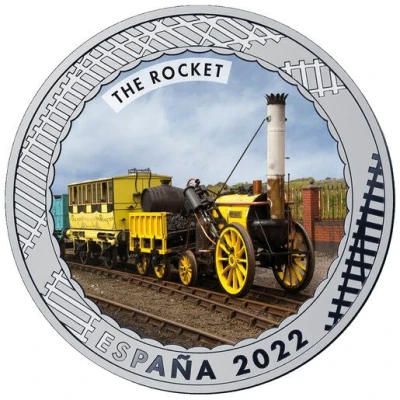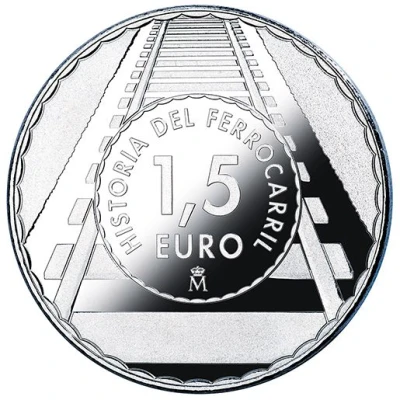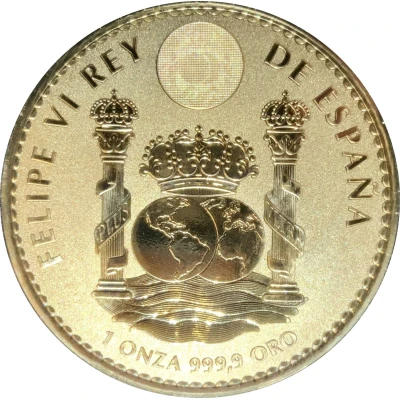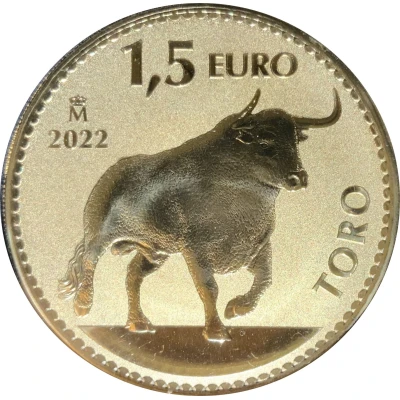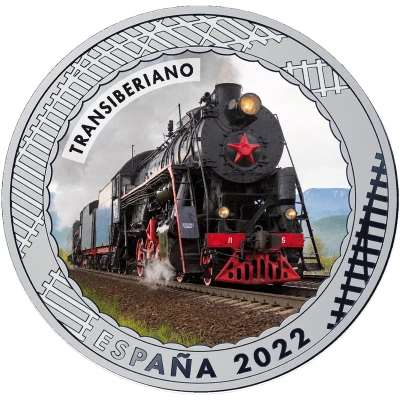
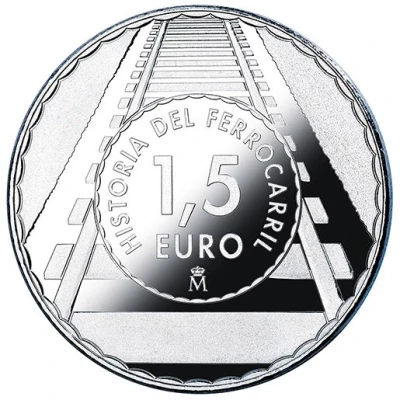

© Real Casa de la Moneda
1.5 Euro Trans-Siberian
2022 year| Copper-nickel (75% copper, 25% nickel) | 15 g | 33 mm |
| Issuer | Spain |
|---|---|
| King | Felipe VI (2014-date) |
| Type | Non-circulating coin |
| Year | 2022 |
| Value | 1.5 Euro 1.50 EUR = USD 1.65 |
| Currency | Euro (2002-date) |
| Composition | Copper-nickel (75% copper, 25% nickel) |
| Weight | 15 g |
| Diameter | 33 mm |
| Shape | Round |
| Technique | Milled, Coloured |
| Orientation | Medal alignment ↑↑ |
| Updated | 2024-10-07 |
| Numista | N#325705 |
|---|---|
| Rarity index | 91% |
Reverse
Series and face value inside a central circle. Outside the central circle, an image of a railway track.
Script: Latin
Lettering:
HISTORIA DEL FERROCARRIL
1,5 EURO
M
Translation: History of railways
Edge
Plain
Comment
For the year 2021, since the European Year of the Rail and the 80th Anniversary of Renfe are celebrated, the FNMT-RCM issues a collection of 20 coins dedicated to the History of the Railways. This series reproduces a selection of trains and locomotives that have been relevant throughout its history.Trans-Siberian: Covering a distance of 9,297 km from Moscow’s Yaroslavski Station to the Asian Vladivostok, the Trans-Siberian is the world’s longest railway track. On June 1 1891, Nicholas, then the heir of Tsar Alexander III, symbolically launched the construction of the track at the terminal station. Because of the complexity of the works, which were commenced at both ends and divided into segments, the first section was not put into operation until 1905 and the track was not fully completed until 1916. The delay was due not only to the track’s length but also to the orographic challenges along the way, such as the Ural mountain range, and to the adverse weather conditions for which Siberia is known. But there were other hurdles in the way: a lack of manpower, epidemics and the wars which broke out during this lengthy period. For all these reasons, the Trans-Siberian is the most epic railway engineering feat ever to have been accomplished.
The line is dotted with monumental masonry works, such as the viaduct across the Obi River in Novosibirsk, with seven sections and a cost in 1897 of one million dollars. Electrification of the line started in 1929 and was fully completed in 2002. The Trans-Siberian railway linked the Atlantic and Pacific Oceans; in political terms, it compounded the Russian Empire; and, above all, it put an end to Siberia’s isolation by including the territory first in the Russian economy and second, in the world’s. This railway acted like a tree trunk whose boughs and branches reach out into other countries such as Uzbekistan and Mongolia. More recently, it has been put to use as a means of connecting emerging China to the West.
Interesting fact
The Trans-Siberian 1.5 Euro coin from Spain features a unique design that showcases the famous Trans-Siberian Railway, which runs from Moscow to Vladivostok, covering a distance of over 9,000 kilometers. The coin's design highlights the railway's iconic trains and the vast, picturesque landscapes of Russia that they pass through. This coin is a fascinating collector's item for anyone interested in railways, history, or geography.
Price
| Date | Mintage | VG | F | VF | XF | AU | UNC |
|---|---|---|---|---|---|---|---|
| 2022 M | 7000 | - | - | - | - | - | - |
Values in the table are based on evaluations by sales realized on Internet platforms. They serve as an indication only for 1.5 Euro (Trans-Siberian) 2022 coin.
